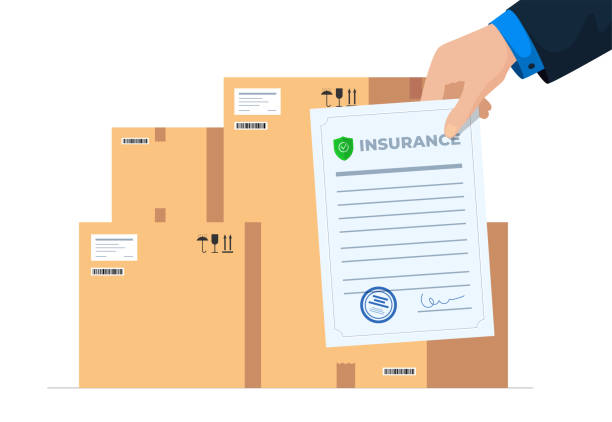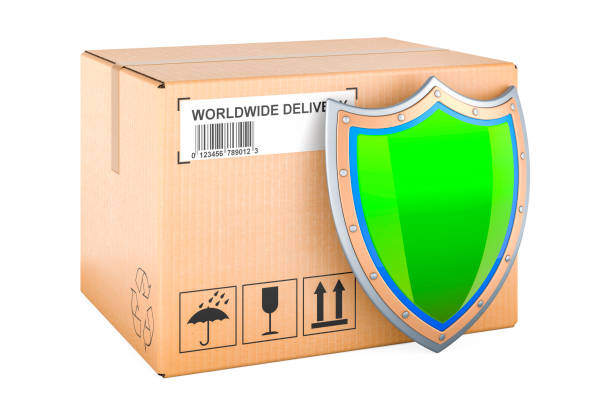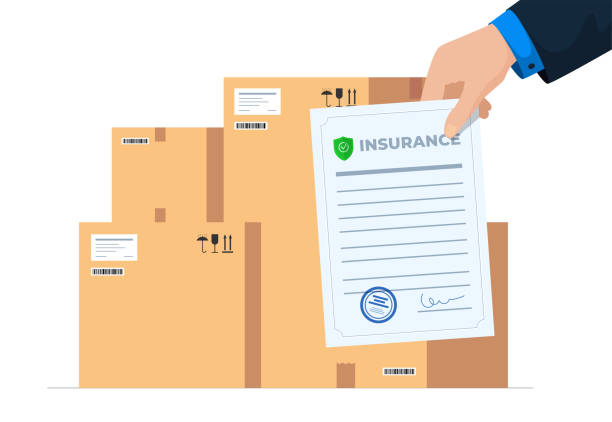Cargo Insurance plays a vital role in protecting goods and merchandise during transit. Whether transported by land, sea, or air, cargo faces numerous risks throughout its journey, including damage, theft, loss, and other unforeseen events. Cargo insurance provides coverage against these risks, ensuring that businesses involved in the transportation and logistics industry can safeguard their valuable cargo and mitigate financial losses. This comprehensive insurance coverage offers peace of mind to businesses and helps maintain the integrity of supply chains by providing financial protection for goods in transit. In this article, we will explore the key aspects of cargo insurance, its benefits, and how it plays a crucial role in protecting businesses and their cargo during transportation.

Types of Cargo Insurance Coverage
Cargo insurance offers different types of coverage to address the diverse needs and risks associated with transporting goods. These coverage options can be tailored to the specific requirements of businesses involved in various modes of transportation, including land, sea, and air.
- All-Risk Coverage: All-risk coverage provides the broadest form of protection for cargo. It covers loss or damage to goods caused by a wide range of perils, including accidents, theft, fire, and natural disasters. This type of coverage is comprehensive and offers peace of mind to businesses by protecting their cargo against a wide array of risks.
- Named Perils Coverage: Named perils coverage offers protection for cargo against specific risks that are explicitly listed in the insurance policy. Examples of named perils include fire, theft, collision, and acts of nature. This type of coverage is suitable when businesses want to focus on specific risks that are more likely to occur in their particular transportation environment.
- Total Loss Coverage: Total loss coverage protects against the complete loss of cargo during transportation. It applies when the cargo is entirely destroyed, damaged beyond repair, or lost. This coverage is especially relevant for high-value or unique items that would cause significant financial loss if they were to be completely damaged or lost.
- General Average Coverage: General average coverage is specific to marine cargo transportation. In the event of a maritime incident, such as a vessel grounding or fire, the general average is a principle that allows for the sharing of losses and expenses among all parties involved in the voyage. General average coverage provides protection to cargo owners against the financial contribution they may be required to make under the general average principle.
- War Risk Coverage: War risk coverage is designed to protect cargo during times of war or acts of war. It provides coverage for losses or damage resulting from war-related risks, such as armed conflict, piracy, and political unrest. This type of coverage is particularly relevant for cargo shipments in regions or areas with a higher risk of war-related events.

It is essential for businesses to work closely with their insurance providers to determine the most suitable type of cargo insurance coverage based on their specific transportation needs, the nature of their cargo, and the potential risks they may face during transit. By selecting the appropriate coverage, businesses can ensure that their cargo is adequately protected and mitigate potential financial losses.
Risks and Hazards in Transportation
Transporting goods and cargo involves various risks and hazards that can potentially lead to damage, loss, or delay. Understanding these risks is crucial for businesses to assess the need for cargo insurance and take appropriate measures to mitigate potential losses. Here are some common risks and hazards associated with transportation:
Accidents and Collisions: Accidents can occur during transportation due to factors such as driver error, adverse weather conditions, or mechanical failures. Collisions with other vehicles, obstacles on the road, or even incidents involving multiple vehicles can result in significant damage to the cargo.
Theft and Pilferage: Cargo theft is a persistent risk in transportation, particularly for high-value goods or those susceptible to theft. Criminals may target shipments during transit or while the cargo is at rest. Additionally, pilferage, which involves the theft of smaller quantities of cargo or individual items, can occur at various points along the supply chain.
Natural Disasters: Natural disasters such as earthquakes, hurricanes, floods, and wildfires can disrupt transportation networks and cause damage to cargo. These events are often unpredictable and can result in the complete loss or destruction of goods.
Fires and Explosions: Fire-related incidents can arise from various sources, including accidents, cargo that is improperly packaged or hazardous, or electrical malfunctions. Fires and explosions can lead to extensive damage to the cargo and pose a significant risk to the safety of personnel involved in transportation.
Improper Handling and Loading: Improper handling and loading of cargo can result in damage or loss. Inadequate securing of cargo, mishandling of fragile or perishable items, or improper weight distribution can lead to accidents, cargo shifting, and damage during transportation.
Acts of Terrorism: In today’s global environment, the risk of terrorism affecting transportation cannot be overlooked. Acts of terrorism, such as bombings or attacks targeting transportation infrastructure or cargo, can disrupt supply chains and cause significant damage and loss.
Customs and Regulatory Issues: Compliance with customs and regulatory requirements is essential for international shipments. Failure to meet these requirements can result in delays, fines, or even confiscation of the cargo.
These risks highlight the importance of cargo insurance for businesses involved in transportation. Cargo insurance provides financial protection against these hazards, ensuring that businesses can recover the value of their goods in the event of damage, loss, or delay. By mitigating the potential financial impact of these risks, cargo insurance allows businesses to focus on their core operations with confidence, knowing that their cargo is adequately protected.
Benefits of Cargo Insurance for Businesses
Cargo insurance provides numerous benefits for businesses involved in shipping and transportation. Firstly, it offers financial protection against potential losses or damages to the cargo during transit. Shipping goods across different modes of transportation, such as by sea, air, or land, can expose them to various risks like theft, accidents, natural disasters, and even piracy. Cargo insurance safeguards businesses by covering the value of the goods in case of any unforeseen events, reducing the financial impact on the business.
Secondly, cargo insurance enhances the credibility and trustworthiness of a business. When a company has cargo insurance in place, it demonstrates its commitment to protecting the interests of its customers and partners. This creates a positive image and strengthens relationships, especially when dealing with international trade where the distance and complexity of transactions can increase the likelihood of incidents occurring. By having cargo insurance, businesses can assure their stakeholders that they are prepared to handle any contingencies that may arise during the transportation process.
Moreover, cargo insurance contributes to the smooth operation of supply chains. In the event of cargo loss or damage, insurance coverage allows businesses to recover their financial losses quickly and efficiently. This enables them to fulfill their obligations to customers, avoiding delays in delivery and preventing disruptions to the overall supply chain. Without cargo insurance, businesses may face significant financial setbacks, leading to potential disruptions in their operations, reputation damage, and even loss of customers.
Cargo insurance also provides peace of mind to businesses. Knowing that their cargo is protected by insurance coverage, companies can focus on their core activities and strategic objectives without worrying about the potential risks associated with transportation. This peace of mind allows businesses to operate with confidence and pursue growth opportunities, both domestically and internationally. It alleviates concerns related to the uncertainties of shipping and ensures that the financial investments in the cargo are safeguarded.

Additionally, cargo insurance can help businesses mitigate potential legal disputes and liabilities. In the unfortunate event of cargo loss, damage, or theft, disputes may arise between the various parties involved in the transportation process, such as shippers, carriers, and insurers. Cargo insurance coverage provides a clear framework for resolving such disputes, minimizing the legal complexities and potential financial liabilities that businesses may face. By having insurance in place, businesses can rely on the expertise of insurance providers to handle any legal matters that may arise, allowing them to focus on their core business operations.
In conclusion, cargo insurance offers several significant benefits for businesses involved in shipping and transportation. It provides financial protection against potential losses or damages to the cargo, enhances credibility and trustworthiness, ensures the smooth operation of supply chains, provides peace of mind, and helps mitigate legal disputes and liabilities. By investing in cargo insurance, businesses can mitigate risks, protect their assets, and maintain a competitive edge in the global marketplace.
Factors Affecting Cargo Insurance Premiums
Several factors play a crucial role in determining the premiums of cargo insurance. Understanding these factors is essential for businesses to effectively manage their insurance costs and make informed decisions regarding their cargo insurance coverage. One of the primary factors that influence cargo insurance premiums is the nature and value of the cargo being shipped. High-value goods or goods that are susceptible to theft, damage, or loss are considered riskier to insure, resulting in higher premiums. Perishable goods, hazardous materials, and luxury items are examples of cargo that often command higher insurance premiums due to their inherent risks.
Another factor affecting cargo insurance premiums is the mode of transportation used. Different modes of transportation, such as air, sea, or land, have varying levels of risk associated with them. For instance, maritime shipping may involve exposure to risks like storms, piracy, and collisions, which can increase insurance premiums. Similarly, air transport, while generally faster and safer, may have higher premiums due to the value of goods being transported and the potential for accidents or catastrophic events. The distance and route of transportation can also impact premiums as longer journeys or routes through high-risk areas may incur higher insurance costs.
The level of coverage and deductible selected by the insured is another significant factor in determining cargo insurance premiums. The coverage limit represents the maximum amount the insurance company will pay in the event of a claim, and higher coverage limits typically result in higher premiums. Similarly, the deductible is the amount that the insured must pay out of pocket before the insurance coverage kicks in. Higher deductibles often lead to lower premiums as the insured is assuming more of the risk themselves. Businesses must carefully assess their risk tolerance and financial capabilities to strike a balance between coverage limits and deductibles that align with their needs and budget.
How to Choose the Right Coverage for Your Home
The past claims history of a business also influences cargo insurance premiums. Insurers consider the loss experience of the insured when determining premiums. If a business has a history of frequent or significant cargo losses, it may be perceived as a higher risk and face higher premiums as a result. Conversely, a clean claims history can demonstrate a commitment to risk management and may lead to more favorable premium rates.
Furthermore, external factors such as global economic conditions, political stability, and the prevalence of natural disasters can impact cargo insurance premiums. These factors can affect the overall risk profile of the shipping industry and influence insurance rates accordingly. For example, regions prone to political unrest or areas with a high incidence of natural disasters may experience higher insurance premiums due to increased risks.

Lastly, the choice of the insurance provider and the terms and conditions of the insurance policy can also impact cargo insurance premiums. Different insurance companies may have varying risk assessment methodologies, pricing structures, and underwriting criteria, resulting in differences in premiums. Additionally, policy-specific factors such as coverage enhancements, special endorsements, or additional services included in the policy can affect the premium amount.
In summary, several factors contribute to the determination of cargo insurance premiums. The nature and value of the cargo, the mode of transportation, coverage limits and deductibles, claims history, external factors, and the insurance provider and policy terms all play a role in shaping the premium rates. Businesses must carefully evaluate these factors, assess their risk exposure, and work closely with insurance providers to find the right balance between coverage and cost. By understanding and managing these factors, businesses can optimize their cargo insurance coverage and effectively protect their goods during transit.
Understanding the Claims Process in Cargo Insurance
Understanding the claims process in cargo insurance is crucial for businesses that rely on shipping and transportation to protect their goods during transit. When an incident occurs that results in loss, damage, or theft of the insured cargo, the claims process enables businesses to seek compensation from their insurance provider. While the specific details may vary depending on the insurance policy and provider, the general steps involved in the claims process can be outlined.
The first step in the claims process is to promptly notify the insurance provider about the incident. It is essential to report the claim as soon as possible to ensure that the insurer can begin assessing the situation and initiating the necessary actions. The notification should include all relevant information about the incident, such as the date, time, location, description of the loss or damage, and any supporting documentation or evidence available, such as photographs or witness statements.
Once the claim is reported, the insurance provider will assign a claims adjuster who will be responsible for evaluating the claim. The adjuster will review the policy terms and conditions, assess the extent of the loss or damage, and determine the coverage and applicable deductibles. They may also conduct investigations, gather additional evidence, and work with relevant parties, such as carriers or surveyors, to gather information and assess liability.
During the claims assessment, the insurance provider may request further documentation or proof of loss, such as invoices, shipping documents, packaging records, or inspection reports. It is crucial for businesses to provide all requested information in a timely manner to ensure a smooth claims process. Open communication and cooperation with the claims adjuster can facilitate the process and help resolve any potential issues or concerns efficiently.
Once the assessment is complete, the insurance provider will make a determination regarding the claim. If the claim is found to be valid and covered under the policy, the insurer will offer a settlement to the insured business. The settlement amount will depend on various factors, including the value of the cargo, the coverage limits, and any deductibles applicable. The insured business can either accept the settlement or negotiate with the insurer if they believe the offered amount is insufficient.
Upon reaching a settlement, the insurance provider will arrange for the payment to the insured business. The timeline for receiving the payment will depend on the specific terms and conditions outlined in the insurance policy and the internal processes of the insurer. It is important for businesses to review the settlement agreement and ensure that all necessary documentation and requirements are fulfilled to expedite the payment process.
In some cases, disputes or disagreements may arise between the insured business and the insurance provider during the claims process. If this happens, it may be necessary to engage in further discussions or mediation to resolve the issue. If a satisfactory resolution cannot be reached through these means, legal action or arbitration may be pursued to settle the dispute.
Understanding the claims process in cargo insurance enables businesses to effectively navigate the complexities involved in seeking compensation for the loss, damage, or theft of their insured cargo. By promptly reporting the claim, cooperating with the claims adjuster, providing necessary documentation, and reviewing the settlement agreement, businesses can increase the likelihood of a smooth and successful claims process.
Conclusion
In conclusion, cargo insurance plays a vital role in protecting businesses involved in shipping and transportation. It offers financial security by mitigating the risks associated with the loss, damage, or theft of cargo during transit. The benefits of cargo insurance are manifold, ranging from providing financial protection and enhancing credibility to ensuring smooth supply chain operations and offering peace of mind to businesses. By considering factors such as the nature of the cargo, mode of transportation, coverage limits, and claims history, businesses can make informed decisions about their cargo insurance coverage and manage their insurance costs effectively.
